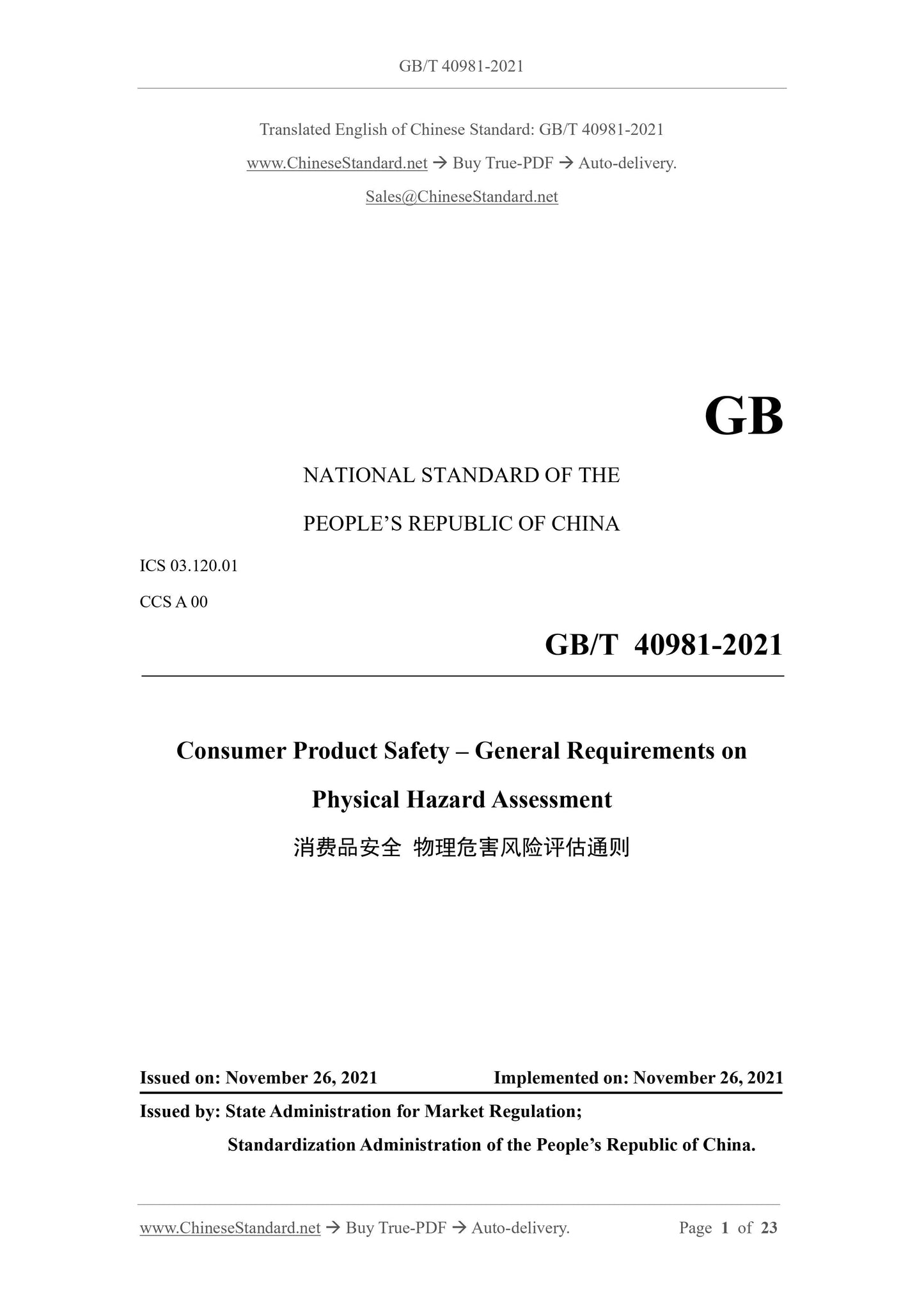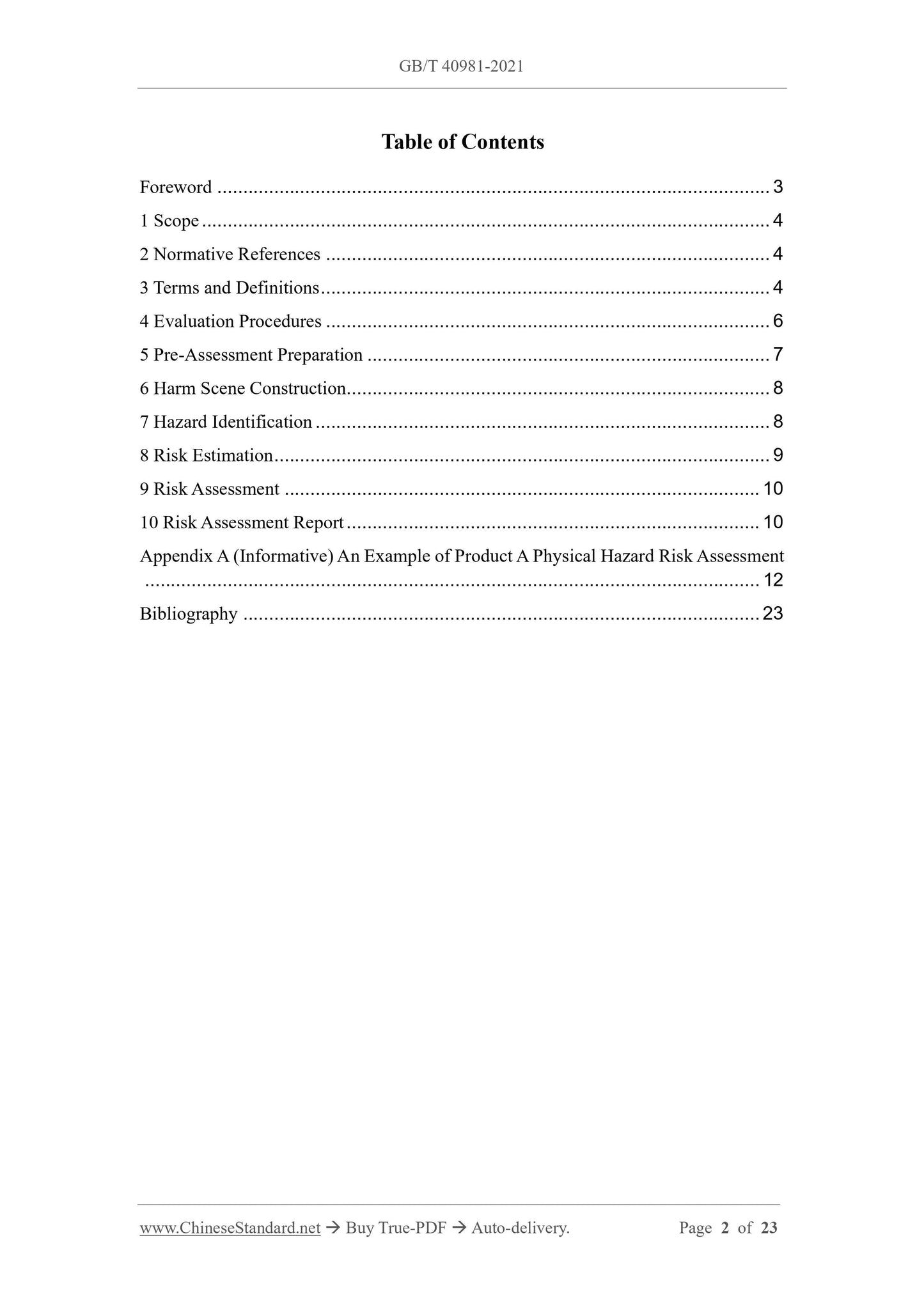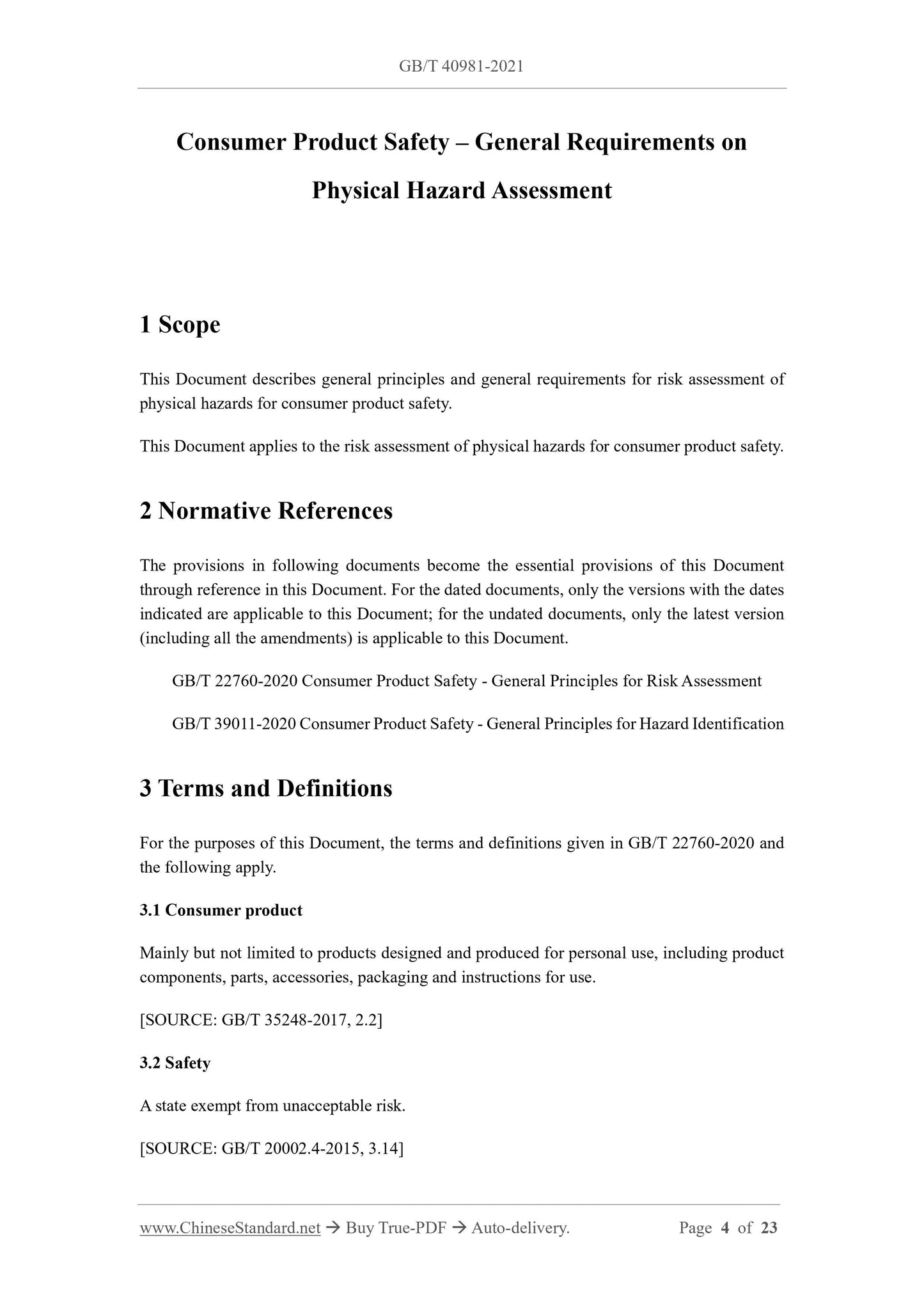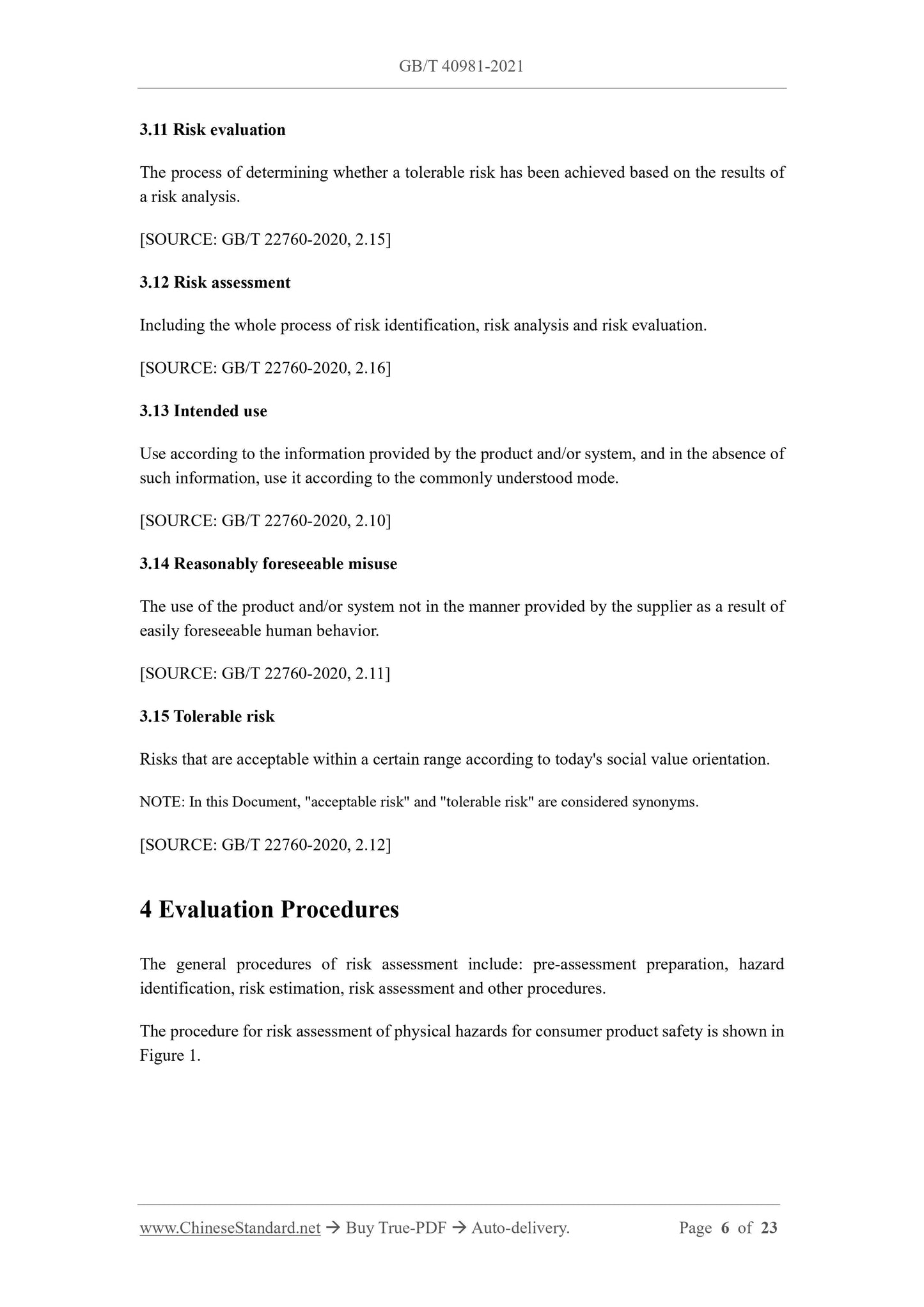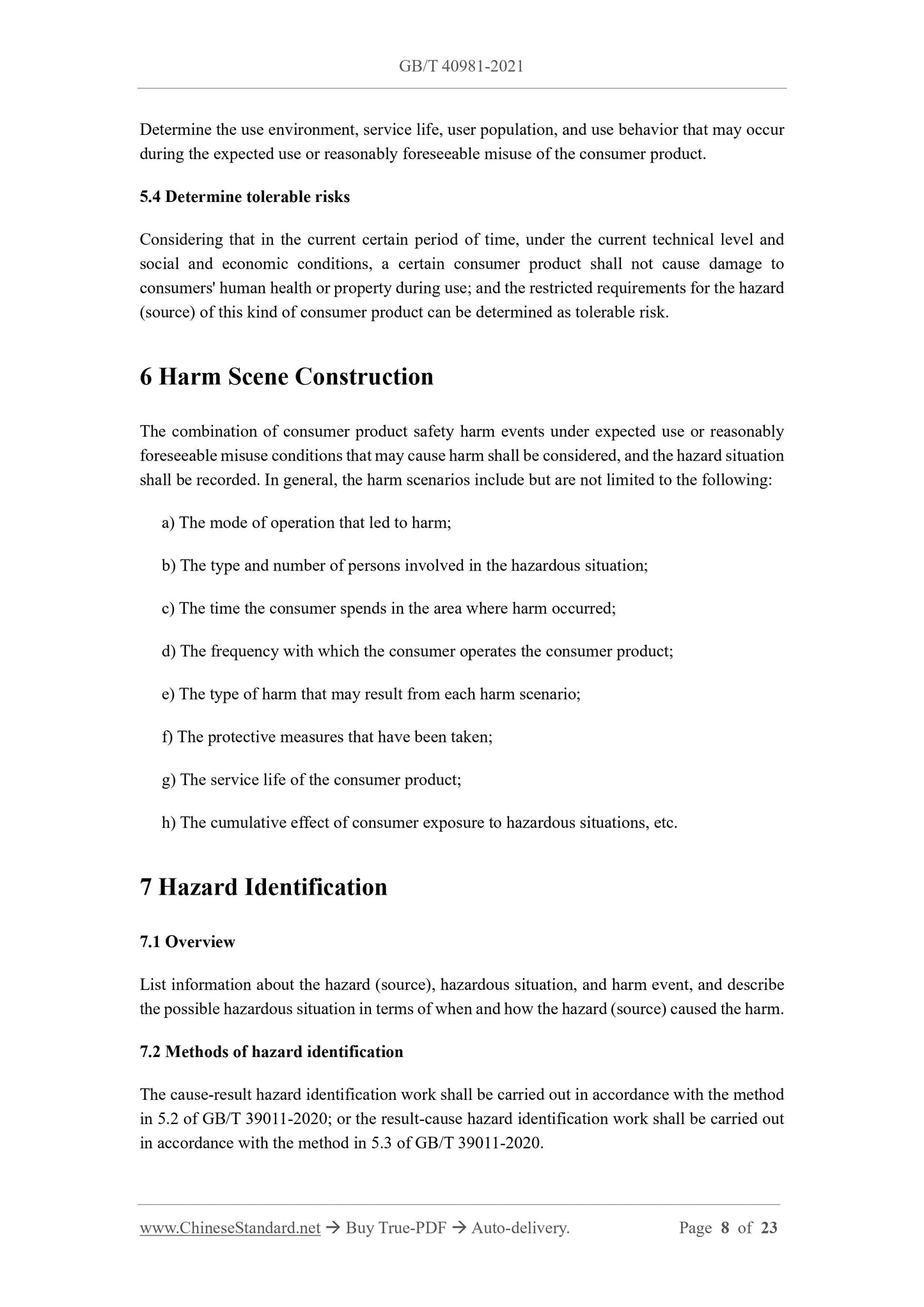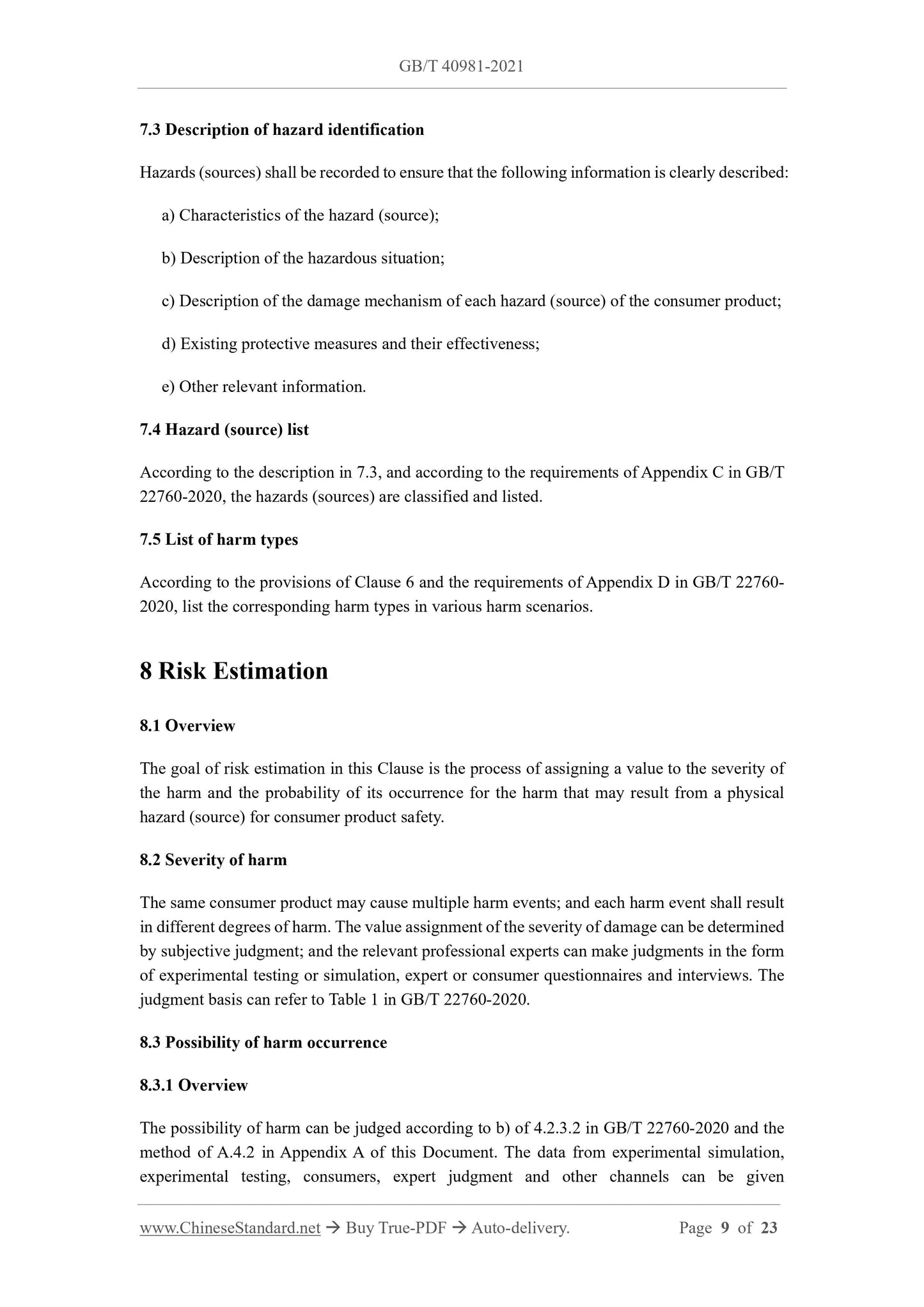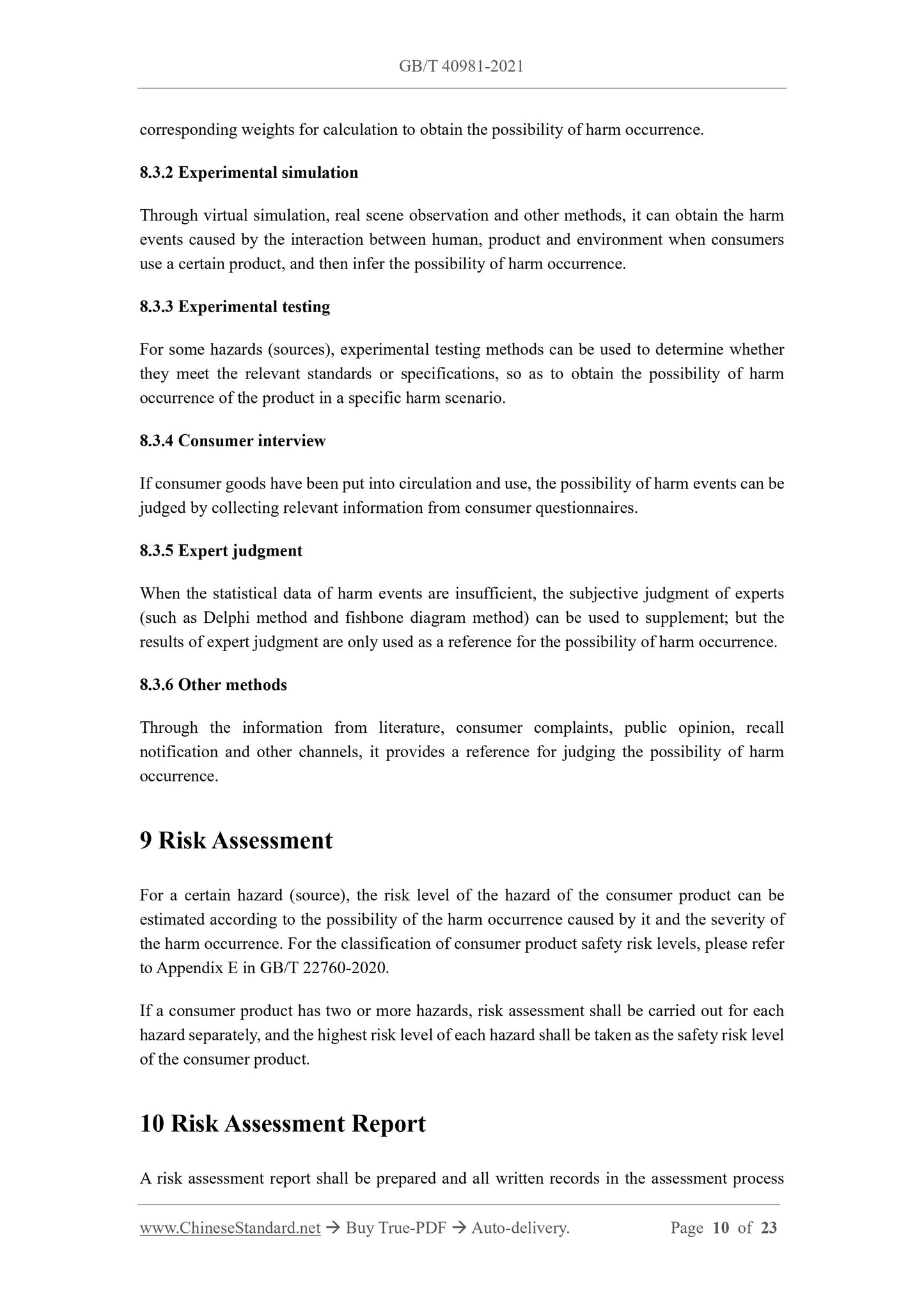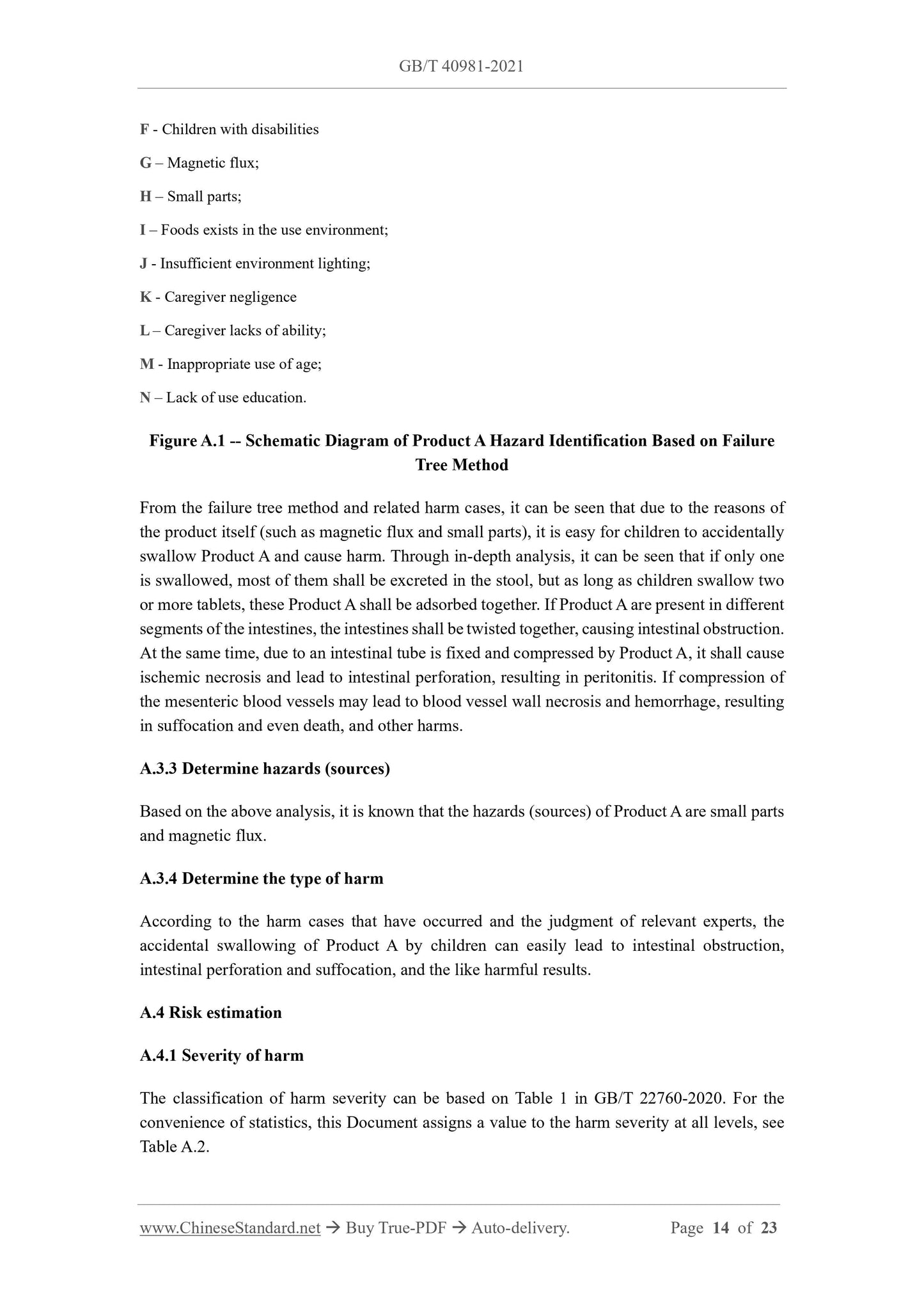1
/
of
8
www.ChineseStandard.us -- Field Test Asia Pte. Ltd.
GB/T 40981-2021 English PDF (GB/T40981-2021)
GB/T 40981-2021 English PDF (GB/T40981-2021)
Regular price
$320.00
Regular price
Sale price
$320.00
Unit price
/
per
Shipping calculated at checkout.
Couldn't load pickup availability
GB/T 40981-2021: Consumer product safety - General requirements on physical hazard assessment
Delivery: 9 seconds. Download (and Email) true-PDF + Invoice.Get Quotation: Click GB/T 40981-2021 (Self-service in 1-minute)
Newer / historical versions: GB/T 40981-2021
Preview True-PDF
Scope
This Document describes general principles and general requirements for risk assessment ofphysical hazards for consumer product safety.
This Document applies to the risk assessment of physical hazards for consumer product safety.
Basic Data
| Standard ID | GB/T 40981-2021 (GB/T40981-2021) |
| Description (Translated English) | Consumer product safety - General requirements on physical hazard assessment |
| Sector / Industry | National Standard (Recommended) |
| Classification of Chinese Standard | A00 |
| Word Count Estimation | 18,147 |
| Issuing agency(ies) | State Administration for Market Regulation, China National Standardization Administration |
Share
